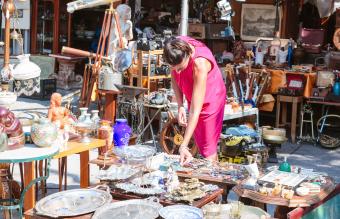Finding and buying valuable antiques can be an exciting and rewarding endeavor, whether you are a seasoned collector or a novice enthusiast. Antiques carry historical significance, unique beauty, and the potential for significant financial appreciation. However, the process requires knowledge, patience, and a strategic approach. Here’s a comprehensive guide to help you find and buy valuable antiques.
Do Your Research
Before diving into the world of antiques, invest time in research. Understand the history, styles, and characteristics of the items you are interested in. Familiarize yourself with different periods and the notable makers or artists from those times. Books, online resources, and antique dealer associations are valuable sources of information. The more you know, the better equipped you’ll be to identify genuine pieces and recognize their value.
Verify Authenticity
Ensuring the authenticity of an antique is crucial. Look for markings, signatures, or stamps that indicate the maker or origin. Research these marks to verify their legitimacy. Condition is also a key factor; genuine antiques will show signs of age and use, but excessive wear or recent modifications can impact their value. If possible, seek items with provenance—documented history that verifies their origin and authenticity.
Inspect the Item
Thoroughly inspect any antique before purchasing. Check for damage, repairs, or alterations that could affect its value. For furniture, examine the joints, hardware, and wood quality. For ceramics, look for maker’s marks, glaze consistency, and any chips or cracks. For art, consider the condition of the canvas or paper, the frame, and any signatures. If buying online, request detailed photos and ask questions about the item’s condition and history.
Shipping Considerations
Sometimes companies will provide shipping, but you should make sure they are used to packaging delicate items and have established protection methods for antiques. They should have insurance for any transportation, but it is a good idea to get your own as well. You may want to look into other transport options, such as other companies that specialize in antique transport, which can be found on Shiply USA.
Understand Market Trends
The value of antiques can fluctuate based on market trends and consumer interests. Stay informed about what’s popular and what’s declining in value. Subscribing to antique magazines, following market reports, and joining collector groups can provide insights into current trends. This knowledge can help you make informed purchasing decisions and identify potential investment opportunities.
Consider the Long-Term
Buying antiques is often a long-term investment. Consider not only the current value of the item but also its potential for appreciation. High-quality, well-preserved items from notable makers or periods are more likely to increase in value over time. Ensure that the pieces you buy are items you appreciate and enjoy, as their value may also be sentimental and aesthetic.
Build a Network
Networking with other collectors, dealers, and experts can be invaluable. Attend antique fairs, join collector clubs, and participate in online forums. These connections can provide you with advice, insider knowledge, and access to exclusive items. Experienced collectors can also offer mentorship and guidance as you build your collection.
Conclusion
Finding and buying valuable antiques is a journey that combines passion, knowledge, and strategy. You can successfully uncover hidden treasures by conducting thorough research, exploring diverse sources, verifying authenticity, inspecting items carefully, negotiating prices, staying informed about market trends, considering long-term value, and building a network. Enjoy the hunt, and appreciate the beauty and history that antiques bring into your life.

